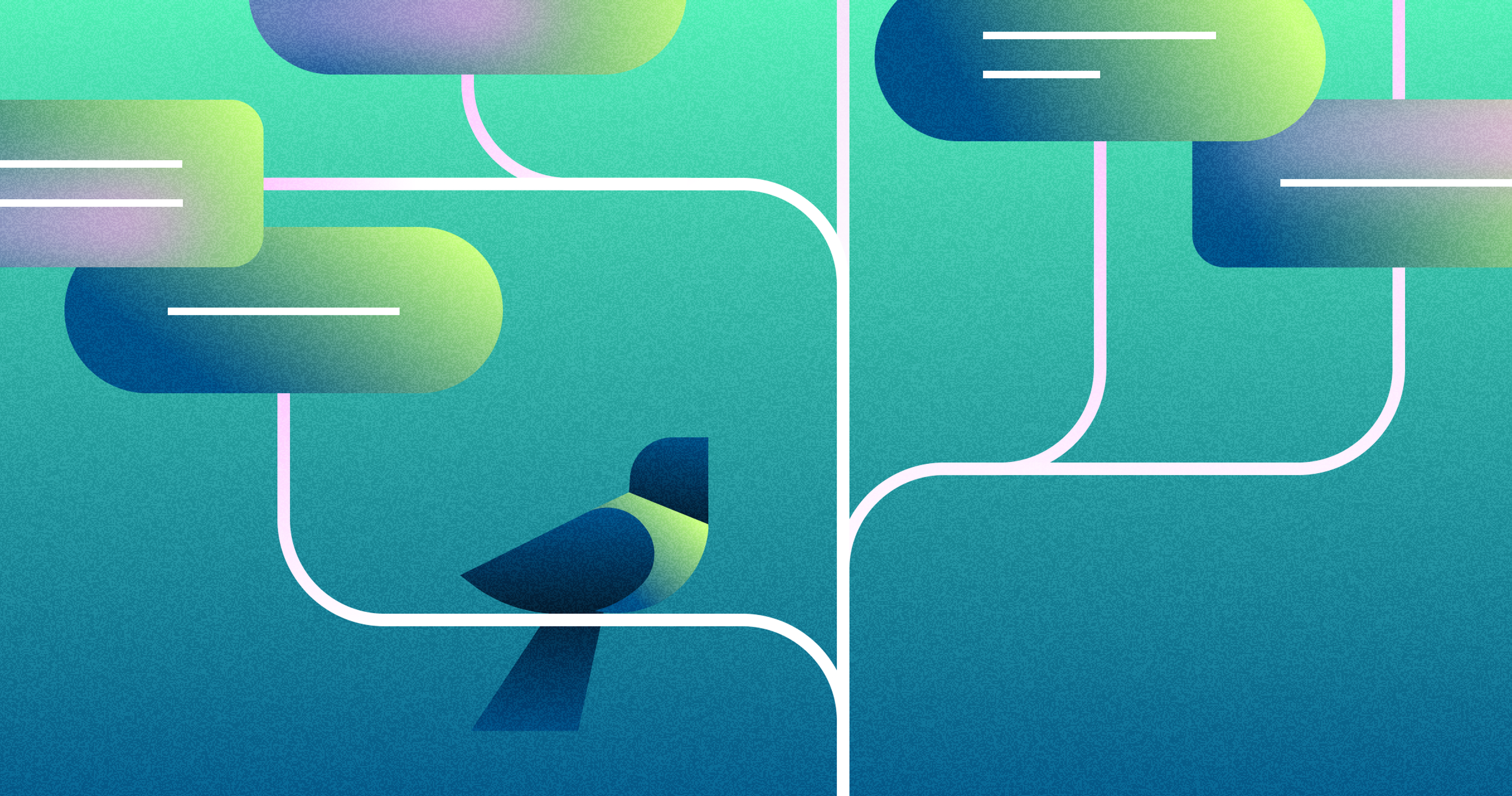UI/UX design creates digital products that feel natural and useful.
UI (user interface) handles the look and touch: layouts, buttons, color, type, spacing, and micro-interactions so each screen is clear and consistent.
UX (user experience) covers the end-to-end journey: how easily people find value, move through tasks, and how satisfied they feel overall.
The design process ties UI and UX together. It starts with research to understand users and goals, forms personas and problem statements, maps user flows, and sets requirements. Wireframes define structure. Prototypes show interactions. Usability testing exposes friction, and iteration refines the solution. The outcome: a product that solves the right problem and is a pleasure to use.
Understanding UI/UX Design
UI/UX design combines technology, creativity, and human psychology to create digital experiences that feel natural. UI design focuses on what users see and touch directly. UX design covers the entire experience, including how users feel and think while using your product.
Good design starts with understanding that every user brings expectations, mental limits, and emotional needs to your product. The best designs work with human psychology instead of fighting against it.
UI vs UX by Clay
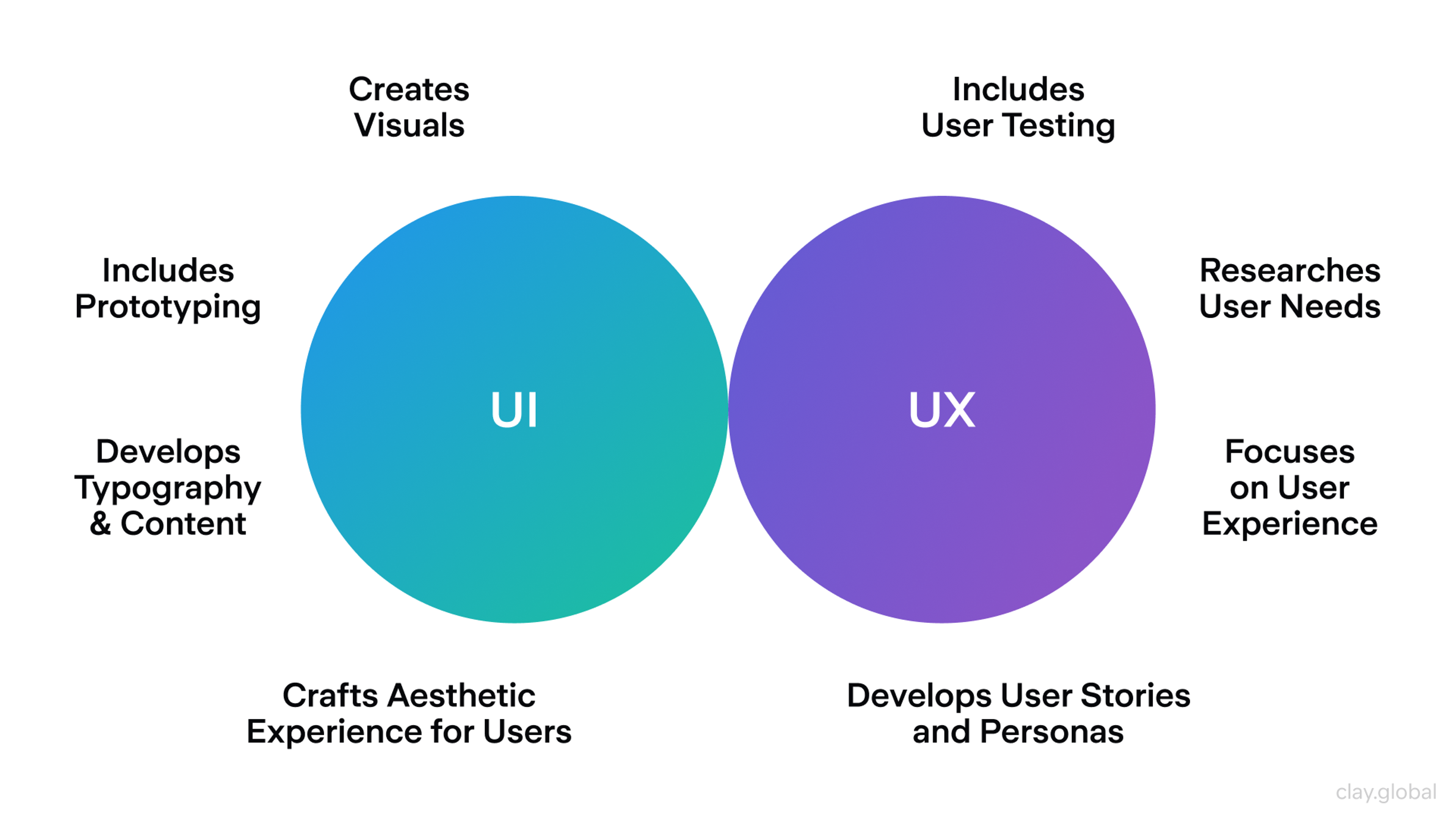
The Role of Psychology in Design
How People Think When Using Interfaces
Human thinking drives how users process information and make choices. When designers understand these mental shortcuts, they can build interfaces that feel intuitive and easy to use.
Memory science tells us that most people can simultaneously hold only about seven chunks of information. This is why menus, forms, and content should be organized and straightforward. Users quickly scan for patterns they’ve seen before, and familiar layouts let them understand the interface without extra effort.
How Humans Interact with Computers
Human-computer interaction research has uncovered rules that keep digital systems user-friendly. These rules show how people naturally want to work with technology.
Physical control is usually better than complex commands. People want to click, drag, and swipe more than they want to write long commands. Prompt feedback tells users what happened the moment they act, and keeping similar buttons and choices consistent cuts the time it takes to learn.
Mental Effort and Interface Design
Mental effort is the thinking the user must do to interact with your interface. The less effort someone puts in, the smoother and more enjoyable the experience will be.
Part of this effort is tied to the core task the user is trying to accomplish. While you can’t entirely remove this, you can make sure the user spends their thinking energy on their goal rather than on understanding your interface. The rest of the mental load comes from design slip-ups, such as vague labels, mixed-up colors, or buttons that work differently in similar situations.
Clear visual structure can channel the user’s attention and lighten their mental load. Research shows that people usually scan screens in set patterns, often starting in the upper-left corner and moving in F-shaped or Z-shaped sweeps. By arranging your content to match these paths, you help users find what they need with minimal searching.
Research and Discovery
Advanced Research Methods
Good UX research combines multiple methods to build complete understanding of users and their needs. Different research methods serve different purposes and provide different types of insights.
UX Research Process by Clay

Qualitative research explores why users behave in certain ways. Methods include user interviews, observation studies, and field research. These approaches reveal motivations, emotions, and context that numbers alone cannot capture.
Quantitative research measures what users do and how often they do it. Surveys, website analytics, and usability measurements provide statistical proof for design decisions. Large sample sizes help identify patterns across user groups.
Mixed methods research combines both approaches. This strategy provides both statistical significance and deep understanding of user needs.
Understanding User Emotions and Thoughts
Empathy mapping helps teams understand user perspectives systematically. This visual tool captures what users think, feel, see, say, do, and experience while using your product.
Create empathy maps during research phases to organize findings from interviews and observations. Include direct quotes from users to keep their authentic voice. Map emotional highs and lows throughout user journeys to find opportunities for improvement.
Use empathy maps to align team understanding and guide design decisions. When team members disagree about user needs, reference empathy maps to ground discussions in actual user data rather than assumptions.
Creating User Personas
User personas represent different user types based on research data. Good personas go beyond demographics to include goals, motivations, pain points, and behavior patterns.
Primary personas represent your most important user group. Secondary personas capture other significant user segments. Anti-personas define who you are not designing for, helping maintain focus.
Include scenario-based information showing how personas would use your product in real situations. Add technology comfort levels, preferred communication styles, and context of use. Update personas regularly as you learn more about your users.
User Persona Example

Mapping Complete User Experiences
Experience mapping shows the complete user journey across all touchpoints and channels. This comprehensive view reveals improvement opportunities that single-touchpoint analysis might miss.
Map current experiences to identify pain points and friction. Include user emotions, thoughts, and actions at each stage. Note behind-the-scenes processes that affect user experience even when users do not see them directly.
Future state mapping shows your vision for improved user experiences. Use these maps to align stakeholders on experience goals and prioritize improvement efforts.
Planning Information and Structure
How Users Organize Information in Their Minds
Information structure organizes content and functionality to match how users naturally think. Good structure feels logical and predictable to users.
Card sorting reveals how users naturally group and categorize information. Open card sorting lets users create their own categories. Closed card sorting tests predefined categories. Hybrid approaches combine both methods.
Tree testing checks navigation structures by asking users to find specific information using text-only menus. This method identifies navigation problems before visual design adds complexity.
Advanced User Flow Design
User flows map the paths users take to complete tasks. Complete flows include decision points, error situations, and alternative paths.
Happy path flows show ideal user journeys when everything works perfectly. Edge case flows handle unusual situations and errors. Consider mobile flows separately, as smaller screens often require different interaction patterns.
Flow analysis reveals bottlenecks and drop-off points. Use analytics to check flow designs and identify where users actually struggle or abandon tasks.
User Flow Example
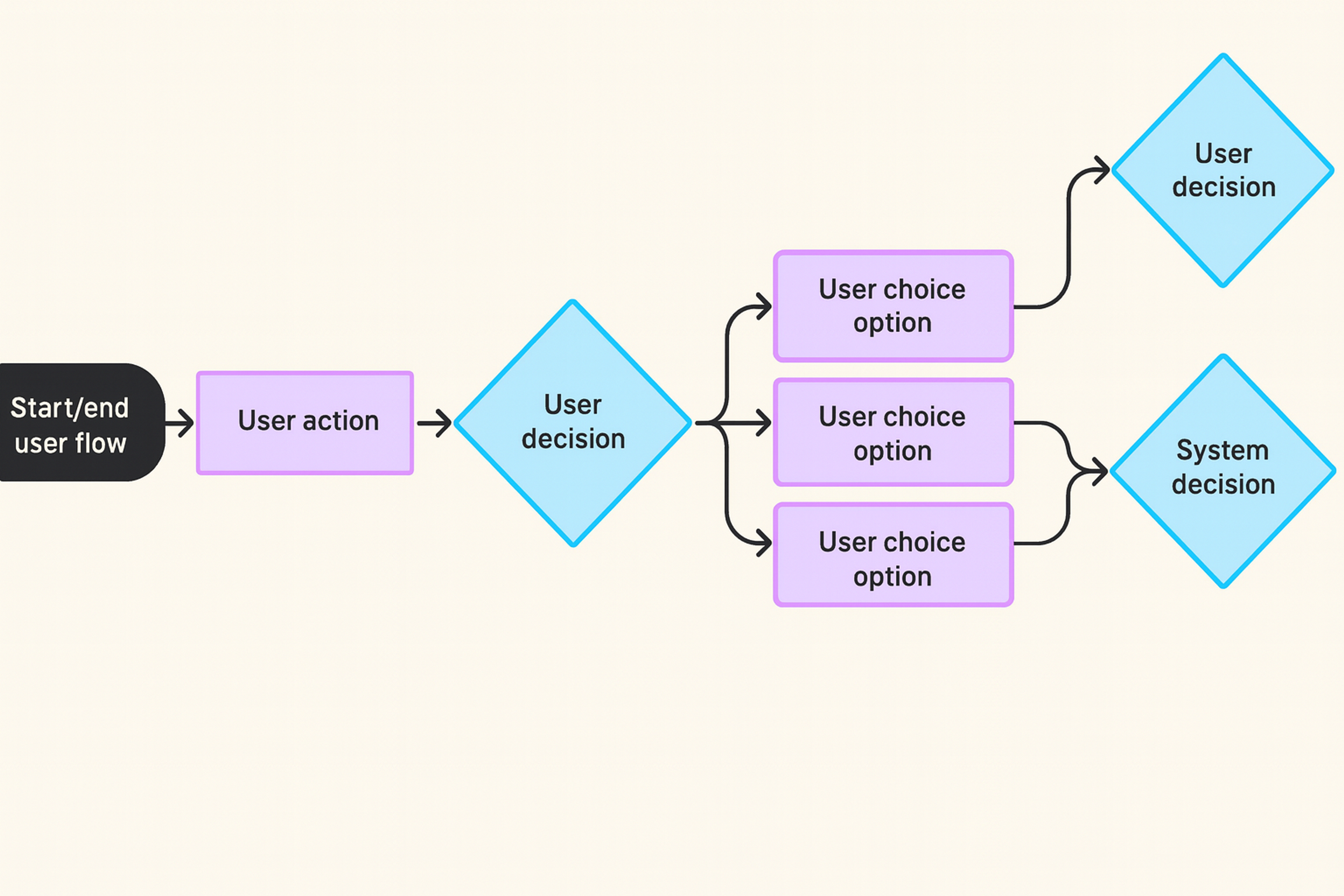
Content Strategy and UX Writing
Writing for User Interfaces
UX writing creates interface content that guides and supports users. Every word in an interface affects user experience.
Microcopy includes button labels, error messages, and helper text. This content should be clear, brief, and action-oriented. Use active voice and familiar vocabulary. Test different versions to optimize clarity and effectiveness.
Content organization guides users through complex information. Use headings, bullet points, and visual formatting to make content scannable. Show detailed information only when users need it.
Voice and tone should match your brand personality while prioritizing user needs. Consistent voice creates cohesive experience across touchpoints. Tone may vary based on context, becoming more serious for error states and more encouraging for onboarding.
Information Structure for Content
Content strategy integrates with information structure to create logical and findable information organization. Content audits reveal what you have and what you need.
Content modeling defines types of content and their relationships. This systematic approach helps maintain consistency across large sites and applications.
Search engine optimization integration ensures that well-structured content also performs well in search results. User-focused information structure often aligns naturally with search engine optimization goals.
5 Steps of the UX Design Process
Here is the complete UX design process:
UX Design Process by Clay
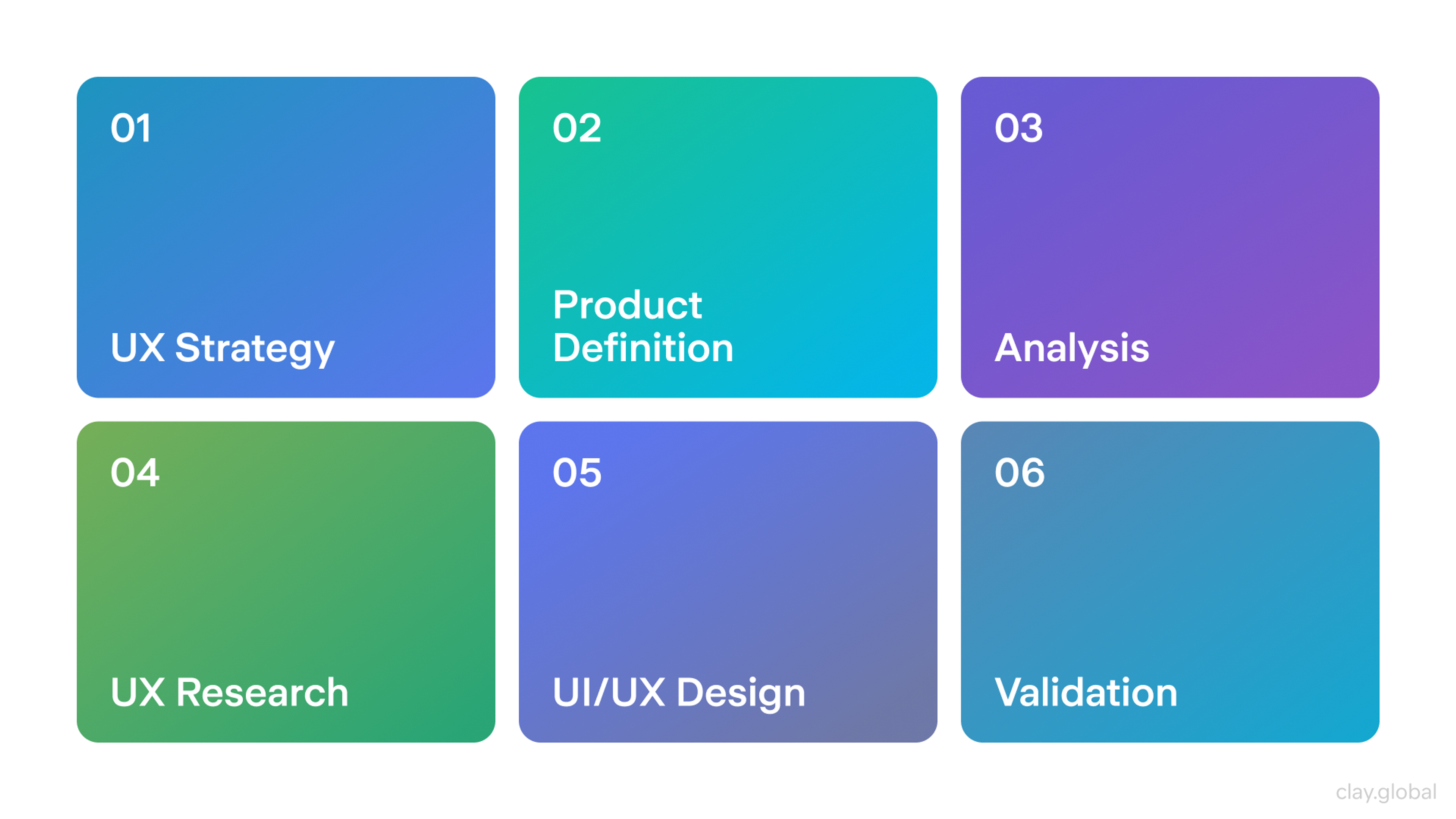
Step 1: Research and Discovery
Gathering User Insights
This first step aims to understand the real users and connect what they need with what the business wants to achieve. Designers start by conducting user interviews, distributing surveys, and examining competitors' strategies.
The interviews and surveys show what users do, what they care about, and where they struggle. The competitive research then points to what is common in the market and where we can do something better.
Creating Personas and Journey Maps
Next, the team builds user personas, which are made-up profiles inspired by the research. These personas keep everyone focused on real user needs rather than guesses. Journey maps are drawn to show the user's whole experience, from the first click to the moment they finish their task. These maps highlight where things go smoothly and could be better, ensuring the final design is easy to use and meets the business goals.
By combining these insights, designers ensure that the end product meets user requirements and aligns with business objectives, creating a harmonious balance between usability and strategic goals.
In the Discover case study, we used user personas and journey maps to optimize the app’s design. Based on real data, user personas represented different user types, ensuring the design catered to diverse needs.
Journey maps visualize the user’s experience, identifying pain points and opportunities for enhancement. This approach enabled us to align the product with user requirements and business objectives, balancing usability and strategic goals.
Discover Website & Mobile App by Clay
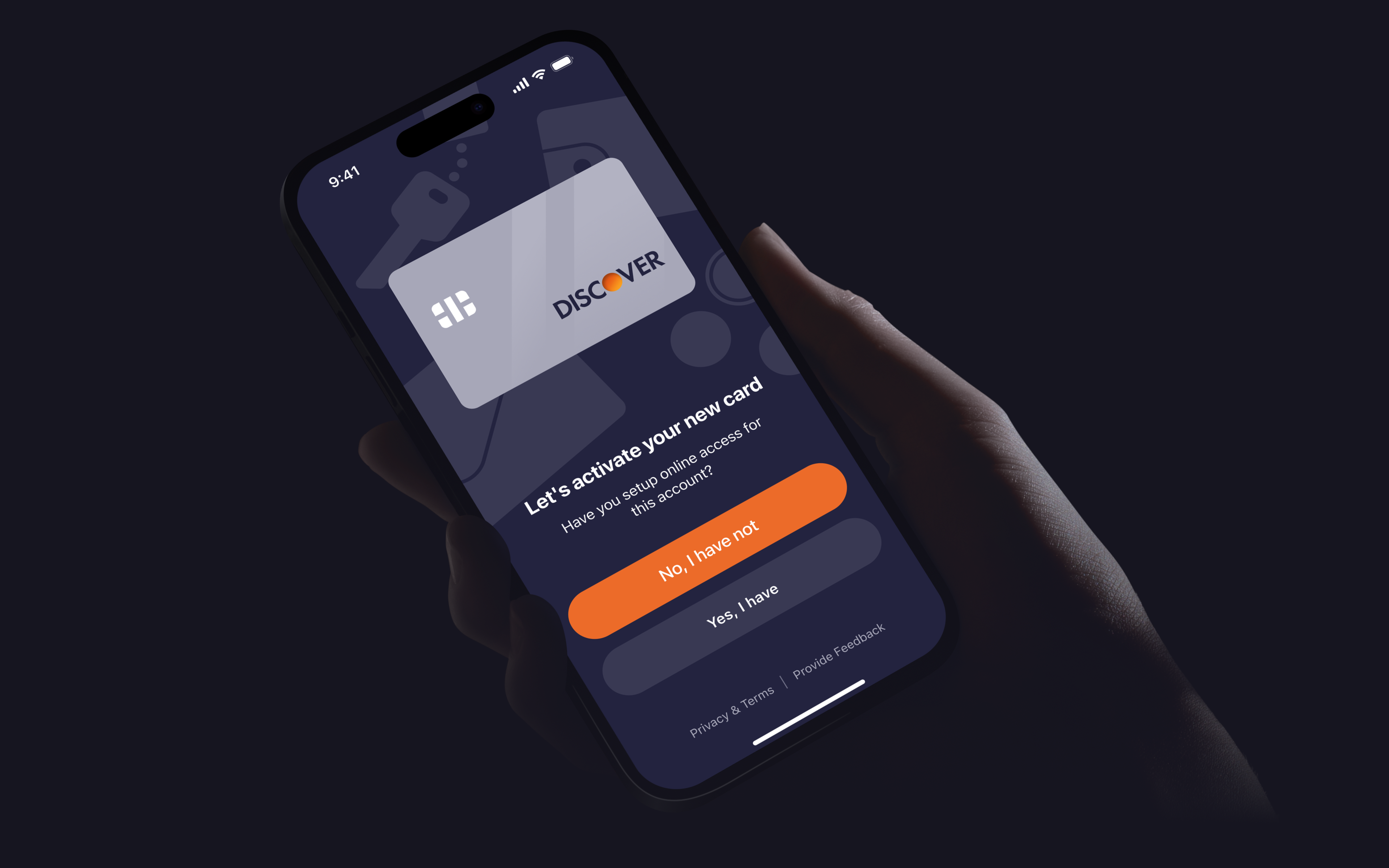
Step 2: Define and Plan
Defining Problem and Scope
Clearly stating the problem at this stage gives everyone the same target to shoot for. Defining the scope explains what is in and out of the project, which helps keep team members and stakeholders on the same page. This clarity also helps manage resources and stops the project from losing control.
Information Architecture
Then, we structure the content so users find it easy to navigate. Information architecture involves creating sitemaps that show a big-picture layout of all the pages or screens. User flows go a step further, mapping the steps users take to complete tasks, including the choices they make and the other paths they might take.
Creating a Design Roadmap
A design roadmap lays out the project's key stages, milestones, and priorities. It acts as a strategic compass for the design team and a communication tool for stakeholders, ensuring everyone is moving toward the same completed vision.
Step 3: Design and Prototype
Low- to High-Fidelity Wireframes
The design process kicks off with low-fidelity wireframes. These rough, sketch-like blueprints concentrate solely on structure and layout — color and graphics are not included yet. Over time, these sketches are refined into high-fidelity mockups, where typography, color, images, and brand elements are added to give a nearly finished look.
Wireframing Importance and Benefits by Clay

Interactive Prototypes
Prototypes turn static designs into clickable, interactive experiences that mimic user experience. Tools like Figma or Adobe XD make it easy to find and fix usability issues before development work starts.
Design Systems
A design system is a living library of reusable components, guidelines, and design standards. It keeps the design consistent, reduces repetitive work, and facilitates collaboration among all teams involved in the product.
Step 4: Test and Iterate
Usability Testing
Usability testing involves real users who show how they interact with the design. This process uncovers friction points and confirms which design elements work as intended.
A/B Testing and Heuristic Evaluations
A/B testing pits different design options against each other to see which performs better. On the other hand, heuristic evaluations rely on expert reviewers to quickly identify usability issues based on established guidelines.
Iterative Improvement
Good design is never finished. It gets better each time we test it, listen to users, and make minor tweaks that add up. Every cycle we go through brings the product closer to what people want — and sets the stage for what they didn't know they needed.
Step 5: Implementation and Launch
Developer Handoff
Now it's time to make the design real. Designers deliver all the specs, images, and interaction info using tools like Zeplin, InVision, or Figma. The secret sauce keeps the chat going: devs ask questions, designers confirm, and everyone stays true to the original vision.
Post-Launch Evaluation and Improvements
Once the product is live, the work isn't done. Teams watch user comments and key metrics to spot what can be better. This keeps the product fresh, easy to use, and in tune with what users want next.
Optimization and Continuous Improvement
Improving Experiences Systematically
Experience optimization systematically improves user experiences based on data and research. This ongoing process requires measurement, analysis, and iterative improvement.
Conversion rate optimization focuses on improving specific user actions like purchases or signups. User experience optimization takes a broader view of overall satisfaction and engagement.
Performance optimization affects user experience directly. Page load speed, responsiveness, and reliability all impact user satisfaction and task completion rates.
Engineering Better Usability
Usability engineering applies systematic methods to ensure products meet usability standards. This discipline combines engineering rigor with user experience design.
Usability requirements define specific, measurable goals for user experience. Examples include task completion rates, error rates, and satisfaction scores.
Usability inspection methods like expert review identify problems without user testing. Expert reviews catch issues early in the design process.
Advanced Analytics and User Behavior
Advanced analytics reveal patterns in user behavior that inform design decisions. Segmentation analysis shows how different user groups behave differently.
What Is Behavioral Data
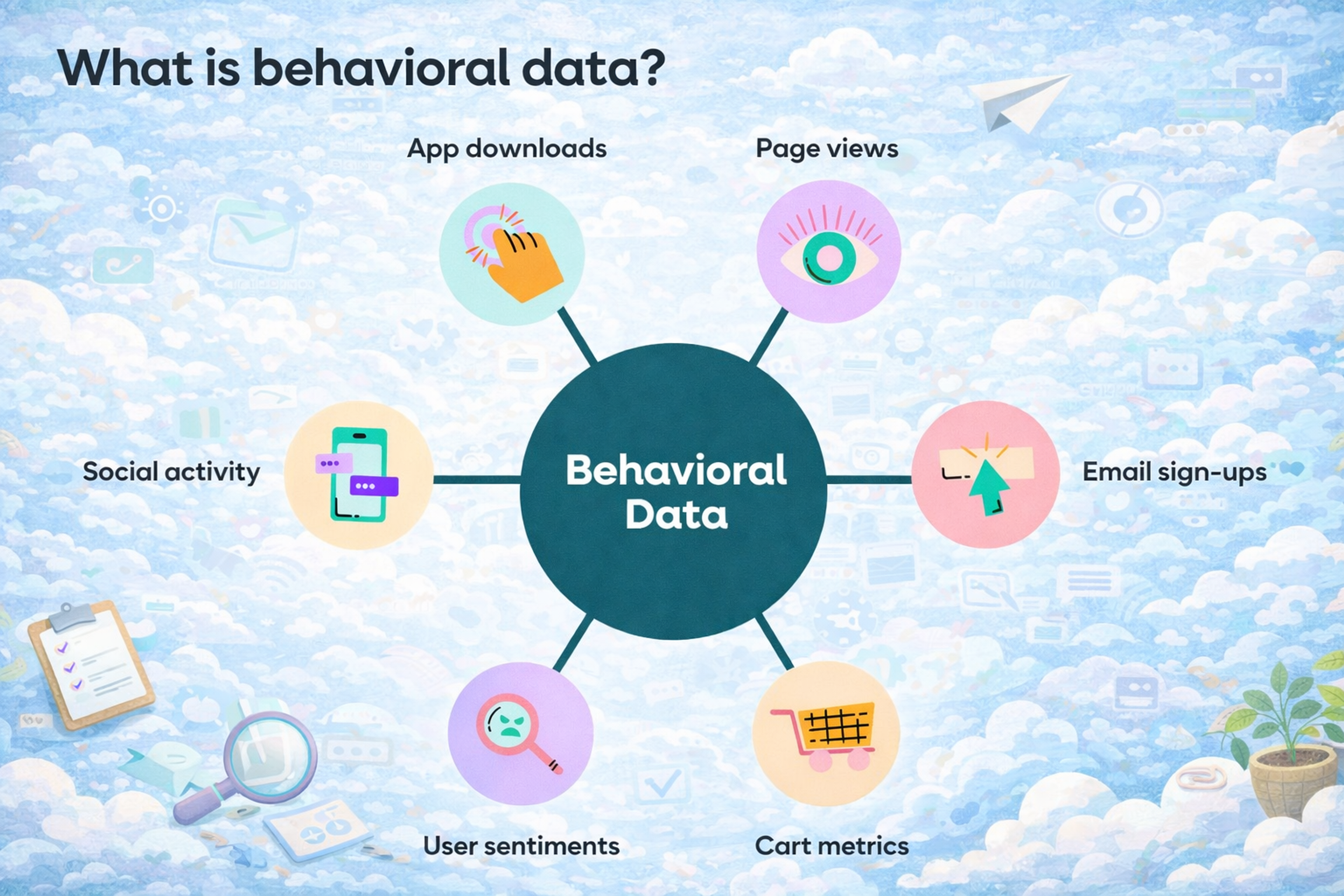
Cohort analysis tracks user behavior changes over time. Funnel analysis identifies where users drop out of important processes. Heat mapping and session recording provide detailed interaction data.
Machine learning applications can predict user needs and personalize experiences. Recommendation systems and adaptive interfaces respond to individual user patterns.
FAQ
What Are The 5 Steps Of The Design Process?
The 5 steps of the design process are Empathize, Define, Ideate, Prototype, and Test. This framework helps designers understand user needs, brainstorm creative solutions, create prototypes, and refine them based on feedback before launch.
What Are The 5 Steps Of UX Design Process?
The 5 steps of the UX design process are Research, Define, Design, Test, and Implement. It starts with understanding user behavior, moves to creating wireframes and prototypes, and ends with testing and delivering the final product.
What Are The 5 Elements Of UX Design?
The 5 elements of UX design are Strategy, Scope, Structure, Skeleton, and Surface. These layers guide the process from defining business goals and user needs to creating a visually appealing and functional interface.
What Is The 5D Process In UX?
The 5D process in UX stands for Discover, Define, Design, Develop, and Deploy. It is a structured approach that begins with research and problem definition, continues with design and development, and finishes with launching the product.
What Are Different UX Design Processes?
Different UX design processes vary by team or project but often include Design Thinking, Lean UX, Agile UX, and Double Diamond. Each process focuses on understanding users, iterative design, and continuous improvement to create better user experiences.
Read More
Conclusion
The design process is a collaborative loop: ideation, wireframing, prototyping, testing, and implementation. Design systems keep work consistent and efficient, while interactive prototypes and iterative research refine UX. Clear communication and post-launch improvements sustain a user-centric product, with UX designers guiding the process end-to-end across teams.


About Clay
Clay is a UI/UX design & branding agency in San Francisco. We team up with startups and leading brands to create transformative digital experience. Clients: Facebook, Slack, Google, Amazon, Credit Karma, Zenefits, etc.
Learn more

About Clay
Clay is a UI/UX design & branding agency in San Francisco. We team up with startups and leading brands to create transformative digital experience. Clients: Facebook, Slack, Google, Amazon, Credit Karma, Zenefits, etc.
Learn more


